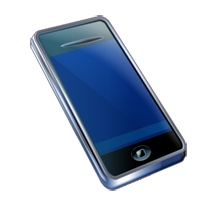 A survey by the Centers for Disease Control and Prevention (CDC) found that 69% of U.S. drivers talked on their cell phones – and 31% read or sent text messages or e-mails while driving. “The cell phone can be a fatal distraction for those who use it while they drive,” warns CDC Director Thomas Frieden.
A survey by the Centers for Disease Control and Prevention (CDC) found that 69% of U.S. drivers talked on their cell phones – and 31% read or sent text messages or e-mails while driving. “The cell phone can be a fatal distraction for those who use it while they drive,” warns CDC Director Thomas Frieden.
Using cell phones to text behind the wheel can increase the danger of fatal crashes by six to 23 times, and drivers using hand-held devices are four times more likely to become involved in crashes serious enough to injure themselves.
You probably have rules about employees talking on their phones and texting while driving – but are they following them?
According to Jim Evans, president of human resources consulting firm JK Evans & Associates, some bosses turn a blind eye to cell phone use behind the wheel, while others don’t want to cut into their employees’ productivity. His advice to employers: “Dust off the old cell phone policy or unwritten practices and revisit whether employee safety and employer liability is at risk.”
To minimize this danger, your company should require employees who drive on the job to:
- Turn off personal phones or switch them to silent mode before entering a company vehicle.
- Pull over to a safe area if they need to make a cell phone call or send or answer a text message.
- Ask a helper or another passenger to make a return call.
- Contact supervisors or dispatchers when the vehicle is parked.
- Avoid smoking, eating, drinking, reading, and any other activities that distract them behind the wheel.
- Tell people who call them while driving that they’ll call back after reaching their destination.





